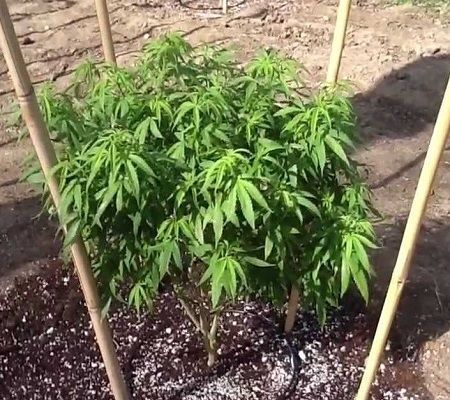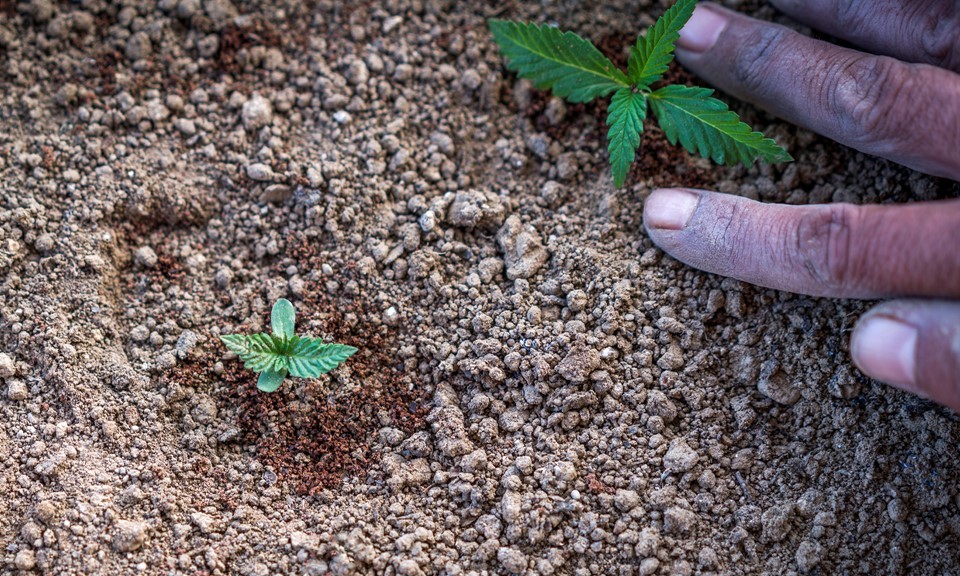There are many factors which play a crucial role when it comes to cannabis nutrient schedule soil management.
Such factors include the climate you live in, whether you are an indoor or outdoor grower, the quality and amount of water you feed to your marijuana plants, your ability to keep pH levels in balance, as well as the particular type of soil you are using.
But don’t let these multiple factors puzzle you, cannabrothers and sisters.
We have gathered the top tips and tricks to help you understand and master the nutrient schedule of cannabis plants in soil growing.
Read on to find out what you need to know and let the marijuanaventure bring tons of smiles on your face (and no wrinkles from getting into a fuss, right J).
Best Cannabis Nutrient Schedule Soil Growing Tips
Vegetation Nutrient Regimen Tips for Marijuana Growing in Soil

The duration of the vegetative phase of your marijuana plants will depend on the strain you choose as well as the conditions you provide to your green babies to thrive.
As a rule of thumbs, if you are using a high-quality soil mix, which is already nutrient-dense, you do not want to apply any additional nutrients during the first stages of vegetation.
Weeks 1 – 3 after the successful seeds’ germination are considered the first stage of vegetation.
Some marijuana strains (and especially those which are of high-quality) will develop much more quickly than others.
Anyway, just start counting the time after seeds have sprouted and until at least 4pairs of leaves have formed.
During this period, your cannabeauties are still too fragile for extra nutrient supplementation.
Once week 3 of vegetation has passed (or any time sooner when you can spot 4 pairs of well-formed leaves on your cannababes), you can start feeding extra Nitrogen.
Nitrogen is a key element in the formation of healthy leaves and stems. Imagine this like the groundings of a healthy marijuana plant with multiple juicy buds.
The leaves produce the sugars which the buds need to fatten and become full of flavor and potency.
However, Nitrogen works in conjunction with Phosphorus and Potassium.
These 3 elements form the holy trio of cannabis cultivation nutrients – N-P-K (Nitrogen – Phosphorus – Potassium).
While your cannabeauties are still in vegetation, look for nutrients with a high Nitrogen ratio.
Remember that marijuana plants are super sensitive beings. It is easy and especially for newbies to overdo with additional nutrients.
It is best to start small and eventually build your way up with nutes very gradually.
You don’t want to shock or burn your plants. Let them show you how well they accept the additional nutrients.
If you notice your emerald princesses thriving and flourishing with a single-day in the week of extra nutrient supplementation, you can gently increase the dosage to twice a week.
Next, check if your plants keep their nutrient tolerance (and hunger) high.
In the case of any abnormalities such as yellowing leaves, brown spots or deformation on the leaves, flush out the soil and let your plants recover.
Supplying the nutrient along with watering once a week will do just fine for a start.
When your vegetating green beauties are getting close to the pre-flowering stage (pistils distinctly sticking out, forming the buds-to-be), you can then again slightly increase the nutrient supply to twice a week.
But ultimately, remember that the nutrient soil schedule will depend on how well your plants react to the nutrient feed regime.
Underfed plants might not reward you with sufficient yields but overfed plants might just turn out more disappointing in terms of the harvest you get.
Flowering Marijuana Plants in Soil Nutrient Tips

After your switch to providing your cannaplants with equal amounts of lightness and darkness, they will grow like crazy from week 4-6.
Buds are not visible yet and even though the flowering has begun, your green beauties will still grow like a vigorous weed.
However, keeping in mind the well-being of the buds, it’s time to start adding a bloom fertilizerwith a higher content of Phosphorus.
When it comes to auto-flowering strains, since you don’t have to switch to 50/50 lightness-darkness schedule, it is the formation of the buds which will help you determine when to start adding nutrients with a lower Nitrogen content.
Then again, whether you are growing hybrid, Sativa, Indica, or an autoflowering cannabis variety, stay away from overfeeding your plants.
Don’t forget that your marijuana beauties will be much more picky in terms of growing conditions during flowering.
Feeding extra nutes once a week will do great. Never add the nutrients during the hottest hours of the day.
It is best to feed your cannabis ladies very early in the morning or very late at night.
A few hours before & after applying the nutrients it is also good to add clean, distilled water. Be careful not to overwater, though.
A week before harvesting, don’t forget to flush out the soil, as well.
All in all, the cannabis nutrient schedule in soil growing simply takes some time and practice to master. After each harvest, you will become more confident about your job as a cannabis gardener. Lastly, you will only win if you stick with the same brand of nutes from start to finish of your crops. That’s the only way you can gain a proper understanding of the particular nutrients you use. Help us spread the love for the ancient green medication by giving this article your likes and shares. Together we stand strong, cannabuddies.



